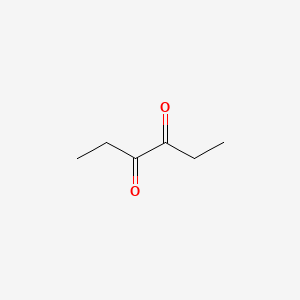
|
3,4-hexanedione |
3,4-hexanedione is a lipid of Fatty Acyls (FA) class. |
9 |
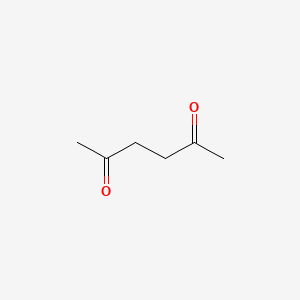
|
2,5-hexanedione |
2,5-hexanedione is a lipid of Fatty Acyls (FA) class. |
646 |
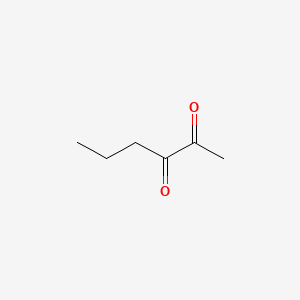
|
2,3-hexanedione |
2,3-hexanedione is a lipid of Fatty Acyls (FA) class. |
33 |
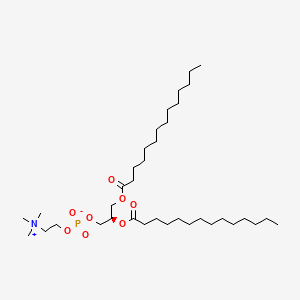
|
18194-24-6 |
18194-24-6 is a lipid of Glycerophospholipids (GP) class. 18194-24-6 is associated with abnormalities such as Cerebrovascular accident, Renal tubular disorder, Atherosclerosis, Hyperlipoproteinemia Type III and Lipid Metabolism Disorders. The involved functions are known as Process, protein folding, Catalyst, Biochemical Pathway and Fold in Medical Device Material. 18194-24-6 often locates in Tissue membrane, Membrane, periplasm, vesicle membrane and outer membrane. The associated genes with 18194-24-6 are Integral Membrane Proteins, Protein Structure, RTN4 gene, RTN4R gene and Protein, Organized by Structure. The related lipids are Micelles, dimyristoylphosphatidylglycerol, 1,2-dihexadecyl-sn-glycero-3-phosphocholine, Unilamellar Vesicles and cholesteryl oleate. The related experimental models are Mouse Model, Arthritis, Adjuvant-Induced, Disease model and Xenograft Model. |
6350 |
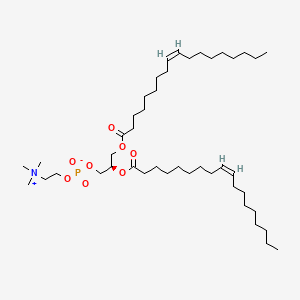
|
1,2-Dioleoyl-sn-Glycero-3-Phosphocholine |
1,2-Dioleoyl-sn-Glycero-3-Phosphocholine is a lipid of Glycerophospholipids (GP) class. 1,2-dioleoyl-sn-glycero-3-phosphocholine is associated with abnormalities such as Exanthema, Renal tubular disorder, Nodule, Gigantism and Mycoses. The involved functions are known as Lysis, Encapsulation, Process, Uptake and Flow or discharge. 1,2-dioleoyl-sn-glycero-3-phosphocholine often locates in Cytoplasmic matrix, Endosomes, soluble, Endoplasmic Reticulum and Membrane. The associated genes with 1,2-Dioleoyl-sn-Glycero-3-Phosphocholine are P4HTM gene, synthetic peptide, BCAR1 gene, PCNA gene and CNTNAP1 gene. The related lipids are Liposomes, 1,2-oleoylphosphatidylcholine, 1,2-distearoylphosphatidylethanolamine, Butanols and Cardiolipins. The related experimental models are Mouse Model and Xenograft Model. |
3428 |
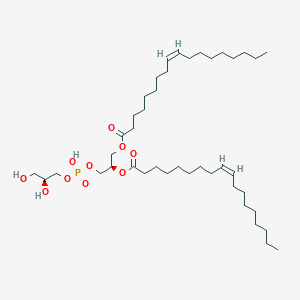
|
PG(18:1(9Z)/18:1(9Z)) |
PG(18:1(9Z)/18:1(9Z)) is a lipid of Glycerophospholipids (GP) class. Pg(18:1(9z)/18:1(9z)) is associated with abnormalities such as Neonatal hemochromatosis, Renal tubular disorder, Hereditary pancreatitis and UDPglucose 4-epimerase deficiency disease. The involved functions are known as Genetic Translation Process, Regulation, Saturated, enzyme activity and Cytokinesis. Pg(18:1(9z)/18:1(9z)) often locates in Membrane, soluble, Tissue membrane, membrane fraction and Thylakoid Membrane. The associated genes with PG(18:1(9Z)/18:1(9Z)) are COIL gene, P4HTM gene, GRAP2 gene, Integral Membrane Proteins and synthetic peptide. The related lipids are Liposomes, Fatty Acids, Sphingolipids, DOPE and 1,2-oleoylphosphatidylcholine. |
437 |

|
Platelet activating factor |
Platelet activating factor is a lipid of Glycerophospholipids (GP) class. Platelet activating factor is associated with abnormalities such as Atherosclerosis, Acute cholecystitis without calculus, Cholecystitis, Colitis and Cholecystitis, Acute. The involved functions are known as Cell Survival, Metabolic Inhibition, lipid oxidation, Apoptosis and Oxidation. Platelet activating factor often locates in soluble, Cellular Membrane, Smooth muscle (tissue), Intima and Tissue specimen. The associated genes with Platelet activating factor are apolipoprotein A-I Milano, Homologous Gene, TSPO gene, HBEGF gene and SLC33A1 gene. The related lipids are Hydroxycholesterols, Liposomes, 25-hydroxycholesterol, Lysophosphatidylcholines and Lipopolysaccharides. The related experimental models are Knock-out, Mouse Model and Transgenic Model. |
7383 |
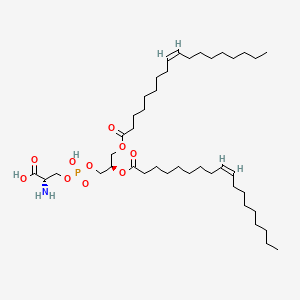
|
1,2-Dioleoylphosphatidylserine |
1,2-Dioleoylphosphatidylserine is a lipid of Glycerophospholipids (GP) class. The involved functions are known as Process, Membrane Potentials and deprotonation. 1,2-dioleoylphosphatidylserine often locates in I band. The associated genes with 1,2-Dioleoylphosphatidylserine are SCTR gene. The related lipids are 1,2-oleoylphosphatidylcholine, DOPE and 1,2-distearoylphosphatidylethanolamine. |
259 |

|
trichostatin A |
Trichostatin is a lipid of Polyketides (PK) class. Trichostatin is associated with abnormalities such as Dentatorubral-Pallidoluysian Atrophy, PARAGANGLIOMAS 3, abnormal fragmented structure, Disintegration (morphologic abnormality) and Hyperostosis, Diffuse Idiopathic Skeletal. The involved functions are known as Acetylation, Cell Differentiation process, histone modification, Gene Silencing and Transcriptional Activation. Trichostatin often locates in CD41a, Hematopoietic System, Chromatin Structure, Blood and Endothelium. The associated genes with Trichostatin are SPI1 gene, CELL Gene, Chromatin, CXCR4 gene and DNMT1 gene. The related lipids are Butyrates, Promega, butyrate, Lipopolysaccharides and Steroids. The related experimental models are Knock-out, Mouse Model, Xenograft Model and Cancer Model. |
5401 |
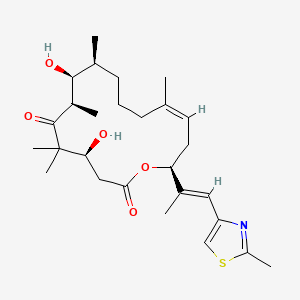
|
Epothilone D |
Epothilone d is a lipid of Polyketides (PK) class. Epothilone d is associated with abnormalities such as Tauopathies, Neutropenia, Neuropathy and Hematological Disease. The involved functions are known as Mutation, Apoptosis, Mitotic arrest, Cell Growth and Anabolism. Epothilone d often locates in Cytoskeleton, Axon, Cell Wall, Chromosomes and Spindle. The associated genes with epothilone D are SLC33A1 gene, Chromatin, GTF2I gene and HEXA gene. |
174 |









